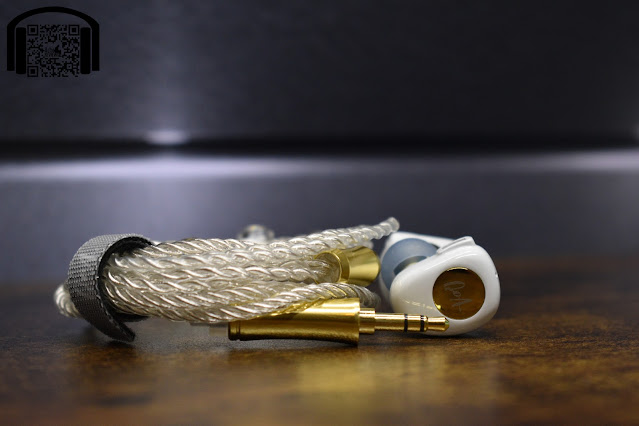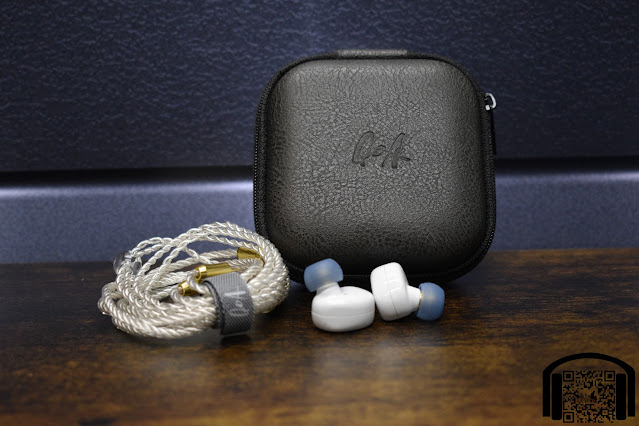- Get link
- X
- Other Apps
English | Español
TLDR version on YouTube: TDLR - QoA Gimlet
The QoA Gimlet have been sent to me by Linsoul for me to publish this review. They have not made any requests or comments and I will do my usual best to be as sincere and unbiased as possible.
The Gimlet can be found via Linsoul here: https://www.linsoul.com/products/kinera-qoa-gimlet
The above is a non-affiliate link (as always).
Intro…
I had never heard of QoA until I received the Gimlet. According to the packaging, QoA stands for Queen of Audio. Doing a quick search on the web with this info led me to the QoA official page which is quite a nice and modern website but is lacking any information about the brand, so I really have no idea how long they have been around. Maybe they have been around for a while and I have just not come across them.
Looking at their page, they have 8 models, with the $59 Gimlet being the most budget orientated (although there are a couple more models at a price that is not much more) and their TOTL IEMs coming in at almost ten times the price.
However, checking out the Linsoul page for these (which is linked above), they are listed as Kinera QoA Gimlet, so I am guessing that they are a sub brand of Kinera. I am just guessing here as I didn’t do any further investigation, I just got on with the important part (listening to them and putting together this review) but there is no mentione of Kinera anywhere on the packaging or on the QoA website.
Presentation…
I have to say that I was pleasantly surprised by the presentation of the Gimlet. They are not exactly high end IEMs but the packaging is very clean and professional looking. Inside we get the IEMs, the cable, a very nice storage/transport case and 6 sets of tips in two styles.
Nothing really out of the ordinary but everything is nicely packaged, with branding on the small bags that contain the tips and they actually gave me a first impression of being quality IEMs without even making it as far as build and aesthetics, much less listening to them. I still maintain that packaging and presentation is the least important part but it is still nice to get a good first impression.
Build and aesthetics…
The Gimlet are completely made of metal and use a simple rounded shape, with no sharp edges, that I actually find quite comfortable. They are a little on the heavier side, if you are used to plastic or resin IEMs that is, but I have not found them to be fatiguing at all even after long periods of time.
The set I received are white with a gold round plate that sports the QoA logo. I am not one for gold but I have to say that they look very elegant and with the matching white and gold cable, I would say that they look a lot more expensive than they actually are.
Everything seems to be well built, both on the IEMs and on the cable (which uses gold coloured metal hardware), so I can’t find anything to comlain about at all in this regard.
Sound…
All tracks mentioned are clickable links that allow you to open the reference track in the streaming service of your choice (YouTube, Tidal, Qobuz, Spotify, etc.)
Let me start off by saying that I really enjoy these IEMs. These are another set that prove that my preference target is really only a reference target, as when things are done properly, I enjoy them even when moving away from my usual preferences. It is also worth noting that I chose the tips with the blueish tint to them.
Here is the graph of the Gimlet in comparison to said target:
I have found that these IEMs work very well for my usual music taste but I will focus, as always, on the test tracks that I use for my reviews and comparisons.
Starting off with the subbass and, of course, “Chameleon” by Trentemoller, there is plenty of that low rumble to do the track justice, without the Gimlet seeming to lose control at all. The same can be said with the subbass in “Royals”, where they stay calm and collected but show that “dirt” that is present in the recording. These may not be for the most hardcore bassheads out there but I really don’t think that the majority of bass lovers would have any issue with the quantity. The quality is also decent. It may not be the most amazing subbass out there but is certainly above the majority of similarly tuned sets in a similar price bracket.
Moving into the midbass and turning to something more EDM, in this case “Sun Is Shining”, I find the bass to be clean and articulate. There is a nice punch to the bass without it becoming muddy or taking over the low end. Focusing on “Crazy”, which I usually use to find out fairly quickly if the low end is too much for me, I found that while it is boosted, it is not annoying. There is a slight hint of the reverb becoming a little too much but the Gimlet don’t seem to lose control of it and they certainly didn’t fatigue me like so many other sets do.
There is a dip in the center of the mids but it is not something that I found to really stand out. It may be more noticeable on instruments that have root notes residing in that area but I certainly didn’t find it affected vocals or acoustic guitars in a negative way. In fact, I found the overall timbre of guitars to be slightly on the war side but very realistic.
As we head to the upper mids, there is a nice presence that brings vocals forward, giving them a bit of a focus but without them becoming overpowering. Using Beth in “Don’t You Worry Child” as a test for harshness, I didn’t find her to become unbearable. She is still quite harsh as her voice is that way in the recording, but I didn’t find it to be overly exaggerated.
In the higher ranges, there is a nice sensation of extension and air, with details seeming realistic and not artificially exaggerated by certain peaks. Sibilance is not overly present either. Using “Code Cool” as my usual test, with my usual unscientific scale of -12 to +12 on Patricia Barbers voice, I would actually place her between a -1 and -2. Paul Simon, in “Diamonds On The Soles Of Her Shoes” can also exhibit sibilance and harshness on many sets of IEMs, yet the Gimlet do keep him in check fairly well.
Details are good and so is soundstage. They are not going to give you the impression of a wide open and huge soundstage, I don’t find that IEMs do that very often, but they are definitely above average in this regard. Image placement is good and so is the spacing between the layers of vocals on “Strange Fruit” by Dominique Fils-Aime. Everything is easily tracked and while I have heard better, I would still say that the Gimlet perform very well in this regard.
Isolation is not the greatest on the Gimlet, being below average across the whole scale. I wouldn’t recommend these IEMs for use in loud environments but they still work very well in offices and places that aren’t too loud.
Conclusion…
I have been very impressed with the QoA Gimlet and while they are just over the 50€ I set for the “Ultra Budget” category, I have to say that I think that these are a set that is well worth taking into consideration for those on a tight budget.
They are well built, they look good (to my eyes of course) and above all, they sound good. During the week I have been listening to them, I found that I enjoyed everything that I listened to and actually found myself adding a bunch of music to my “New Discovery” list to revisit at a later date. What more can we ask than to enjoy the music?
All FR measurements of IEMs can be viewed and compared on achoreviews.squig.link
All isolation measurements of IEMs can be found on achoreviews.squig.link/isolation
To comment or contact, visit any of the following social media platforms:
- Get link
- X
- Other Apps





.png)
.png)

